Landscape Drainage Cloth

Table of Contents
Landscape Drainage Cloth: Your Guide to a Healthy and Thriving Garden
Creating a beautiful and thriving landscape requires more than just aesthetically pleasing plants and features. Proper drainage is crucial for preventing waterlogged soil, which can lead to root rot, plant disease, and unsightly puddles. This is where landscape drainage cloth, also known as filter fabric or drainage fabric, plays a vital role. This comprehensive guide will delve into everything you need to know about landscape drainage cloth, helping you choose the right product and install it effectively.
What is Landscape Drainage Cloth?
Landscape drainage cloth is a permeable geotextile fabric designed to separate different soil layers, allowing water to drain while preventing soil particles from clogging drainage systems. It's a crucial component in many landscaping projects, including:
- French drains: These underground drainage systems rely on drainage cloth to prevent soil from entering and blocking the gravel or pipes.
- Raised garden beds: Using drainage cloth in raised beds improves drainage and prevents soil from washing away.
- Driveways and patios: Preventing soil erosion and maintaining a stable base.
- Retaining walls: Improving drainage behind retaining walls to prevent hydrostatic pressure buildup.
- Pond and water feature liners: Protecting the liner from punctures and soil intrusion.
Choosing the Right Landscape Drainage Cloth: Key Factors
Selecting the appropriate landscape drainage cloth depends on several factors:
1. Material:
The most common materials are polypropylene and polyethylene. Polypropylene is generally stronger and more durable, offering better resistance to UV degradation and puncture. Polyethylene is a more cost-effective option but may not be as long-lasting.
2. Weight:
The weight of the fabric, measured in ounces per square yard (oz/sq yd), indicates its strength and durability. Heavier fabrics are better suited for applications with heavier loads or high water pressure. Consider the specific application; a lighter weight might suffice for raised garden beds, while a heavier weight is necessary for French drains under heavy traffic areas.
3. Permeability:
The fabric's permeability determines how readily water can pass through. You want a fabric that allows for efficient drainage without allowing fine soil particles to migrate. Look for a fabric with a high permeability rating.
4. UV Resistance:
Prolonged exposure to sunlight can degrade the fabric. Choose a cloth with good UV resistance, especially for outdoor applications.
Installing Landscape Drainage Cloth: A Step-by-Step Guide
Proper installation is key to ensuring the effectiveness of your landscape drainage cloth. Here's a general guide:
- Preparation: Clear the area of any debris and level the ground.
- Excavation: Dig a trench of the appropriate depth and width for your drainage system.
- Laying the Cloth: Unroll the drainage cloth, overlapping the edges by at least 6-12 inches to prevent water from seeping through. Secure the overlaps with staples or landscape pins.
- Adding Gravel (for French drains): Fill the trench with gravel, ensuring it’s evenly distributed and covers the entire length of the drainage pipe (if applicable).
- Installing Drainage Pipes (if applicable): Place the perforated drainage pipes on top of the gravel layer.
- Covering the Gravel: Cover the gravel and pipe with more landscape fabric, overlapping the edges as before.
- Backfilling: Backfill the trench with soil, compacting it gently to avoid damaging the drainage system.
Benefits of Using Landscape Drainage Cloth
Using landscape drainage cloth provides numerous benefits:
- Improved Drainage: Prevents waterlogging and improves soil aeration.
- Reduced Erosion: Protects against soil erosion and runoff.
- Enhanced Plant Health: Promotes healthy root growth by preventing root rot.
- Extended Lifespan of Landscaping Features: Protects structures from water damage.
- Cost-Effective Solution: Prevents costly repairs associated with poor drainage.
Frequently Asked Questions (FAQs)
Q: Can I use landscape fabric instead of drainage cloth? A: No, landscape fabric is designed to retain moisture, while drainage cloth is designed to allow water to pass through.
Q: How long does landscape drainage cloth last? A: The lifespan depends on the material and quality; high-quality polypropylene cloth can last for many years.
Q: Where can I buy landscape drainage cloth? A: Most home improvement stores, garden centers, and online retailers carry a range of landscape drainage cloth options.
By understanding the different types of landscape drainage cloth and following proper installation techniques, you can create a healthy, thriving, and visually appealing landscape that will stand the test of time. Remember to choose the right material and weight based on your specific needs and project requirements. Investing in quality drainage cloth is an investment in the long-term health and beauty of your outdoor space.

Thank you for visiting our website wich cover about Landscape Drainage Cloth. We hope the information provided has been useful to you. Feel free to contact us if you have any questions or need further assistance. See you next time and dont miss to bookmark.
Featured Posts
-
Bathroom Peel And Stick Wallpaper
Jan 10, 2025
-
Roses Bedroom Furniture
Jan 10, 2025
-
Velvet Dining Room Chairs
Jan 10, 2025
-
Patio Burrito
Jan 10, 2025
-
Real Madrid Mallorca Confirmed Teams
Jan 10, 2025